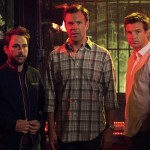Dallas Buyers Club Review
“There ain’t nothing out there that can kill Ron Woodroof in 30 days.” —Ron Woodroof
He was right. The Texas electrician lived with HIV and AIDS for the better part of seven years, from 1985 until his death in 1992. During those seven years, he founded a group that passed illegally trafficked drugs to other HIV/AIDS-stricken men and women. It was called the Dallas Buyers Club, and it’s the basis of a very good film by the same name.
Dallas Buyers Club (the movie) has a near herculean task at its core. It needs to make us care about an angry, hostile man—who also happens to be a raging homophobe—after he learns he’s going to die. Almost as miraculous as the fact that Woodroof lasted those seven years is the fact that Matthew McConaughey, playing Woodroof, and director Jean-Marc Vallée do make us care. Woodroof never becomes a particularly likable man, but his hardened, macho exterior melts away while he extends lives. He gives himself meaning for arguably the first time in his life while learning to accept others for their differences. It’s a beautiful arc, and even though its told in a sometimes frustrating paint-by-numbers way, there’s more than enough meat on Dallas Buyers Club‘s bones (even if there’s hardly any on McConaughey’s).
The film wastes no time. It introduces us immediately to Ron’s homophobia and disease. He’s hacking up a lung playing cards with some pals and discussing Rock Hudson’s disease and sexuality. Not long after that, he’s hospitalized, which is when he’s told he has 30 days to get his affairs in order.
Woodroof denies the diagnosis at first; HIV is a homo’s disease. But he does his research, realizes the truth, and pays off a janitor at the hospital to get him some AZT, which is the only drug approved by the FDA to treat the disease in humans. His physician, Dr. Eve Saks (Jennifer Garner), is mildly suspicious of the swift way the drug sailed through the approval process, but the only medical professional Woodroof can track down with proof and an alternative is Dr. Vass (Griffin Dunne), an American operating a “hospital” in Mexico. He “prescribes” Woodroof some vitamins and proteins and implores Ron to kick his worst habits—cocaine, unhealthy eating, and AZT.
It works wonders for Ron, so he smuggles boxes and boxes over the border to sell. A transgender client, Rayon (Jared Leto), opens some doors into the gay community, and soon, our man has a full-fledged business on his hands. To get around FDA regulations, he stops selling the drugs and starts giving them away to customers who pay $400 a month to join the DBC.
One of 2012’s better documentaries, How to Survive a Plague, documented this time in American history quite well. People were afraid that spit, touching, breathing, anything could spread the virus, and as such, the known infected became pariahs within their community. They protest the FDA and big pharma to try everything at their disposal to save lives. In Dallas Buyers Club, there’s quite a bit of that going on. While Ron isn’t trafficking anything that’s against the law, he’s taking patients away from AZT trials. Results be damned, they’ll shut Ron down—they’ll even change laws—if it means they aren’t performing as expected financially. This material is among Dallas Buyers Club‘s strongest. It’ll get your blood boiling.
Ron’s transformation, meanwhile, is beautifully acted by McConaughey, and the supporting work from both Leto and Garner can’t be overstated. Down a good 50 pounds from his usual weight, he clearly goes above and beyond physically. Emotionally, meanwhile, he’s gentle with this fragile character. The screenplay isn’t, unfortunately. Title cards track time passed, and the choppiness to the character work makes that piece feel a bit unsatisfying. (See the scene at the grocery store with Rayon, for example. It comes out of nowhere.) McConaughey, though—he fights the screenplay’s weaknesses and makes us care about and believe in Ron even when we shouldn’t. It’s a tricky distinction to make, but it’s clear on the screen—this guy navigates these rough waters quite well.
I mentioned Leto and Garner in passing, but their achievements shouldn’t be overlooked either. The former has the decidedly showier role, and while it too suffers from a choppiness that comes with a story told this way, the actor lights up every scene he’s in. Garner does something more interesting, I’d argue. She makes a mostly passive bystander of a character her own, imbuing Eve with the qualities you see in many of Garner’s past characters—a certain endearing type-A-ness, a reluctance to take chances, etc.
By covering so much ground—chronicling one man’s struggle with a terminal illness, transforming him from homophobe to LGBT ally, depicting the personal and social side effects of living with HIV/AIDS, showing us what the political climate was during this period of the epidemic, and more—Dallas Buyers Club was bound to feel a little meandering, even incomplete. But the film we have is nonetheless quite stunning. With a lead performance that deserves to be remembered for years to come and direction that appropriately doesn’t take attention away from that leading man, Dallas Buyers Club is powerful, absorbing prestige fare.


















2 Responses to Dallas Buyers Club Review